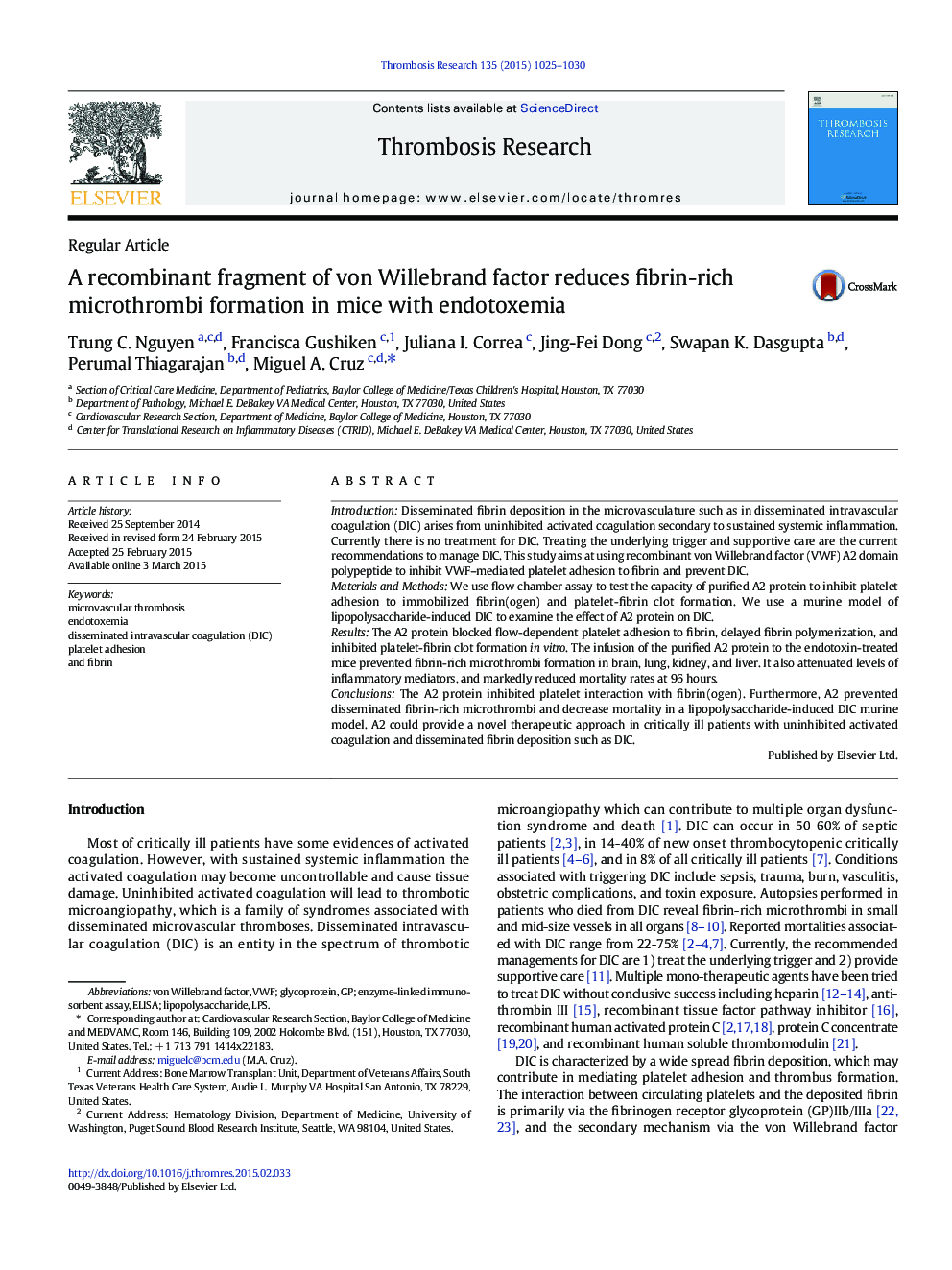| Article ID | Journal | Published Year | Pages | File Type |
|---|---|---|---|---|
| 6001630 | Thrombosis Research | 2015 | 6 Pages |
â¢Isolated recombinant A2 domain (protein) of VWF contains fibrin-binding activity.â¢The A2 protein blocks flow-dependent platelet adhesion to fibrin(ogen).â¢The A2 protein prevented fibrin-rich microthrombi and rescued endotoxemic mice.
IntroductionDisseminated fibrin deposition in the microvasculature such as in disseminated intravascular coagulation (DIC) arises from uninhibited activated coagulation secondary to sustained systemic inflammation. Currently there is no treatment for DIC. Treating the underlying trigger and supportive care are the current recommendations to manage DIC. This study aims at using recombinant von Willebrand factor (VWF) A2 domain polypeptide to inhibit VWF-mediated platelet adhesion to fibrin and prevent DIC.Materials and MethodsWe use flow chamber assay to test the capacity of purified A2 protein to inhibit platelet adhesion to immobilized fibrin(ogen) and platelet-fibrin clot formation. We use a murine model of lipopolysaccharide-induced DIC to examine the effect of A2 protein on DIC.ResultsThe A2 protein blocked flow-dependent platelet adhesion to fibrin, delayed fibrin polymerization, and inhibited platelet-fibrin clot formation in vitro. The infusion of the purified A2 protein to the endotoxin-treated mice prevented fibrin-rich microthrombi formation in brain, lung, kidney, and liver. It also attenuated levels of inflammatory mediators, and markedly reduced mortality rates at 96Â hours.ConclusionsThe A2 protein inhibited platelet interaction with fibrin(ogen). Furthermore, A2 prevented disseminated fibrin-rich microthrombi and decrease mortality in a lipopolysaccharide-induced DIC murine model. A2 could provide a novel therapeutic approach in critically ill patients with uninhibited activated coagulation and disseminated fibrin deposition such as DIC.
